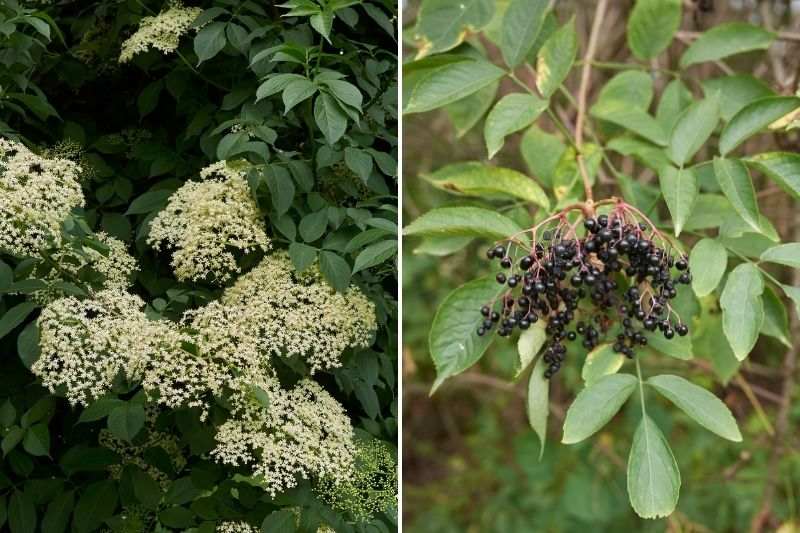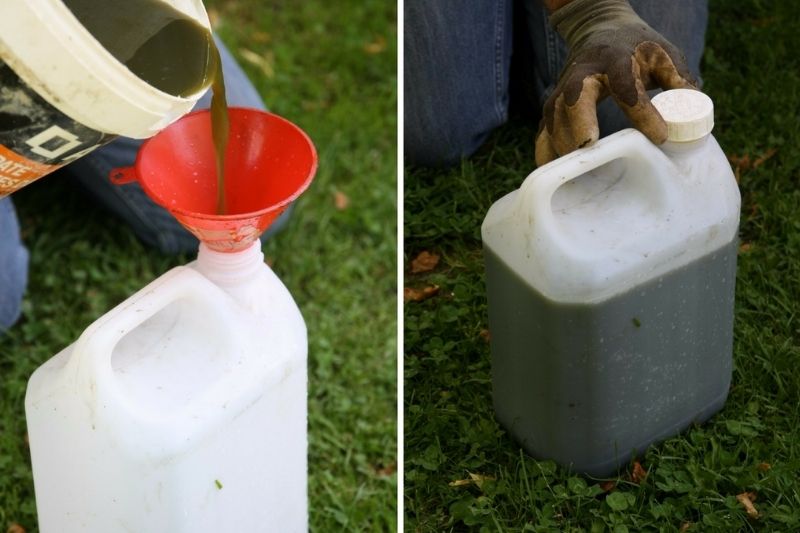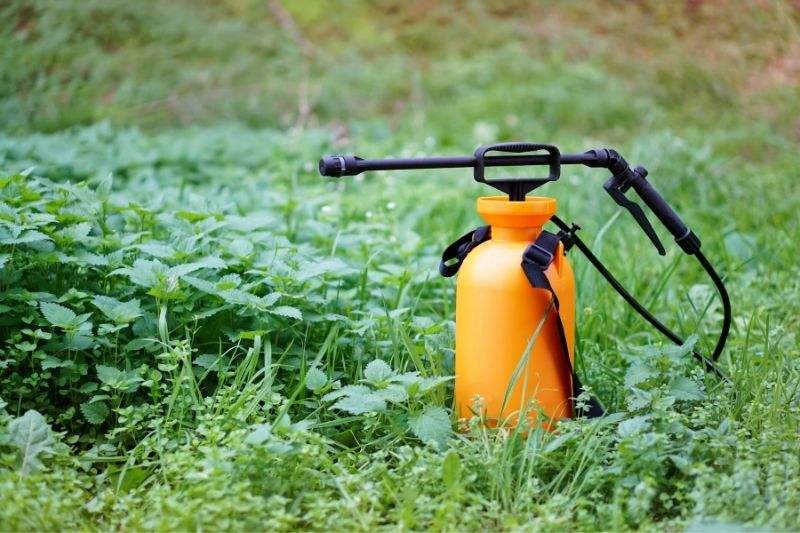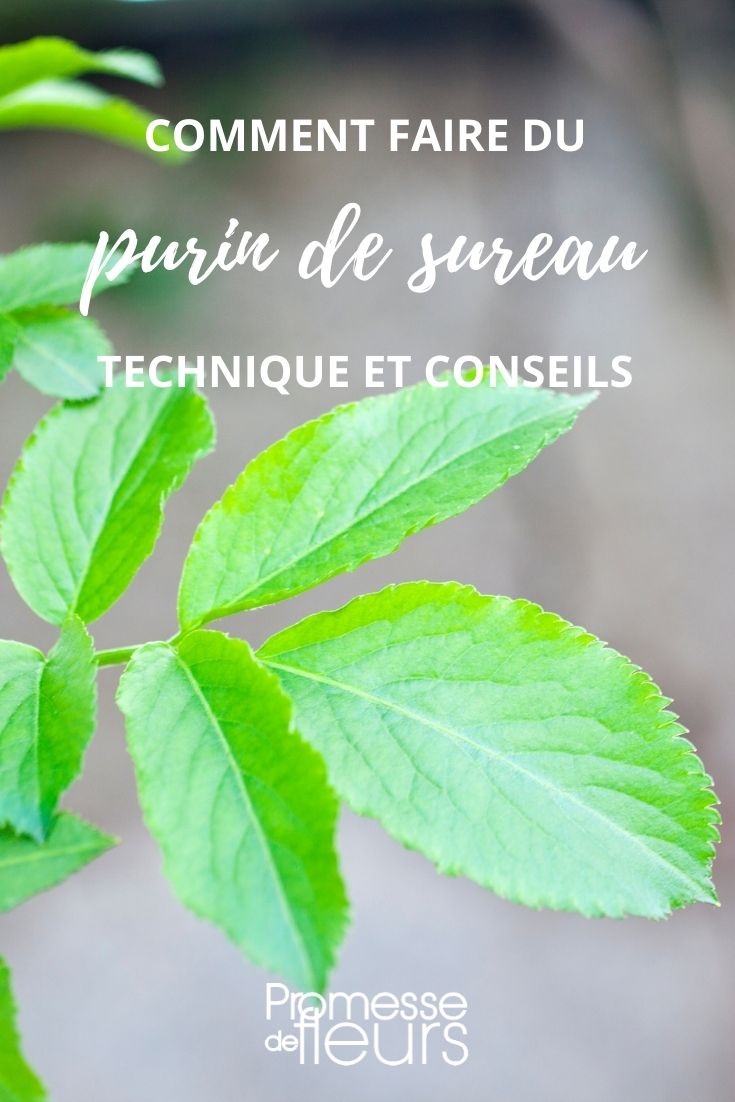Very common in gardens and fallow land, the elder, though often disliked, is very useful to gardeners.
The elder is a small pioneer bush with deciduous foliage and very melliferous white spring flowering. In summer, it bears edible fruits that birds adore.
Once highly prized, the elder can be used for its flowers with medicinal virtues, its berries which make delicious jams and finally, for its leaves useful in the vegetable garden, orchard and ornamental garden.
Elder leaves can be used in various types of preparations. Here, we will focus on the plant slurry.

Sambucus nigra
What is elder plant slurry?
First of all, what is a plant slurry? It is the maceration of a plant in water for several days, usually for 2 weeks.
The advantage of slurry compared to other preparations – infusion or decoction - is that it keeps for a long time, for several months. Moreover, as elder is very common, the raw material is easy to find.
Fresh elder leaves have a very strong smell, somewhat unpleasant for some. Once macerated, you obtain a fermented, foul-smelling mixture that has, among other things, repellent properties against various pests: moles, field mice, voles, aphids, caterpillars...
When to make elder slurry?
You can make this slurry from spring to autumn, as long as the bush has leaves.
How to make elder slurry?
You will need:
- 1 kg of fresh elder leaves
- 10 l of water
- A plastic container with a lid
Prefer rainwater. If you don't have any available, use tap water but leave it to stand for a few hours before making the slurry. The evaporation of chlorine will allow better fermentation.
Avoid using a metal bucket for making the slurry. There would be a risk of metal oxidation during fermentation.
The different steps:
- Chop or cut the leaves and green stems into small pieces. The smaller the pieces, the better the fermentation;
- Pour the 10 l of rainwater over them, in the plastic container;
- Close the bucket with the lid and place it in the shade, so the temperature doesn't rise too much;
- Stir the mixture every day for about ten days, even 15 days.
After one or two days, bubbles should appear. This is a sign that fermentation has started. When there are no more bubbles, the slurry is ready.
- Filter and pour into an opaque plastic container, tightly closed to store your preparation in good conditions so it retains its virtues.

After filtering, store your elder slurry in a container kept away from light.
Keep the container in a shaded place, so it isn't exposed to excessively high temperatures.
Properties
Elder slurry has the advantage of being usable both preventively and curatively. It is used diluted or neat depending on the desired effect.
Elder slurry is mainly known for its repellent action, thanks to its powerful smell, against several garden pests, notably moles and voles. These small animals can cause significant damage. If this is the case in your garden, prefer this natural solution to chemical remedies which will repel, without killing, rodents and moles.
The foul-smelling aspect of the preparation would also give it an insect-repellent role, meaning it helps repel insects, particularly flea beetles, aphids and caterpillars. It won't kill them either. Here, the slurry can be used either preventively, to avoid unwanted insects coming, or curatively, to make them leave.
Moreover, and this is not negligible, elder slurry could be a great help in fighting cryptogamic diseases, meaning those linked to fungi. In the garden, this means that using the slurry allows action at the appearance of mildew, powdery mildew or rust, which are the most frequent attacks.
Finally, this slurry could also have a stimulating effect on plant growth, as it is very rich in nitrogen.
Use as a repellent
Elder slurry as a repellent for moles and small rodents is mainly used to keep away moles and small rodents like voles and field mice that sometimes devastate crops.
Act for this always in dry weather. After rain, the slurry loses all its effectiveness. The operation must then be repeated.
Locate the molehills then remove the earth from the mound to clear the exit hole of the tunnel. Then pour in the slurry. The mole should avoid this section of the tunnel in future.
For voles and field mice, you can proceed in the same way, but it may be harder to find the tunnel entrances. Then water your root vegetables, particularly sensitive to these pests, with diluted slurry (1 l for 10 l of water) to repel them as much as possible.

On the left, a vole and on the right a field mouse
Use as an insect repellent
To repel insects, the strong smell of elder slurry is an asset.
Diluted, meaning 1 l of slurry for 10 litres of water, you will obtain a preventive effect. Spray on plants most sensitive to insect attacks. Notably, those that fear aphids, flea beetles and caterpillars.
If these are already present, then you will need to use the preparation neat for a curative effect. It should be sprayed weekly.
Whether preventive or curative, remember to spray only in dry weather.
Use as a fungicide
Among elder's components is an alkaloid – sambucine – with antifungal properties. As such, the slurry could be used against mildew, powdery mildew and rust for example, which are the best-known cryptogamic diseases.
As prevention, spray a dilution of the slurry on the leaves. Meaning 100 ml of slurry for 1 l of water. Curatively, you can spray, in a light mist, the neat slurry on affected leaves.

Dilute your elder slurry with water to be able to spray it
Use as a fertiliser
To stimulate plant growth, it is possible to use different types of fertiliser. Elder slurry, thanks to its richness in nitrogen, will particularly boost leaf growth.
For this use, the slurry will be used diluted. This means you will mix 1 l of slurry with 10 l of water. Then use the mixture to water plants that seem weak. In the vegetable garden, it is interesting for leafy vegetables.



































Comments